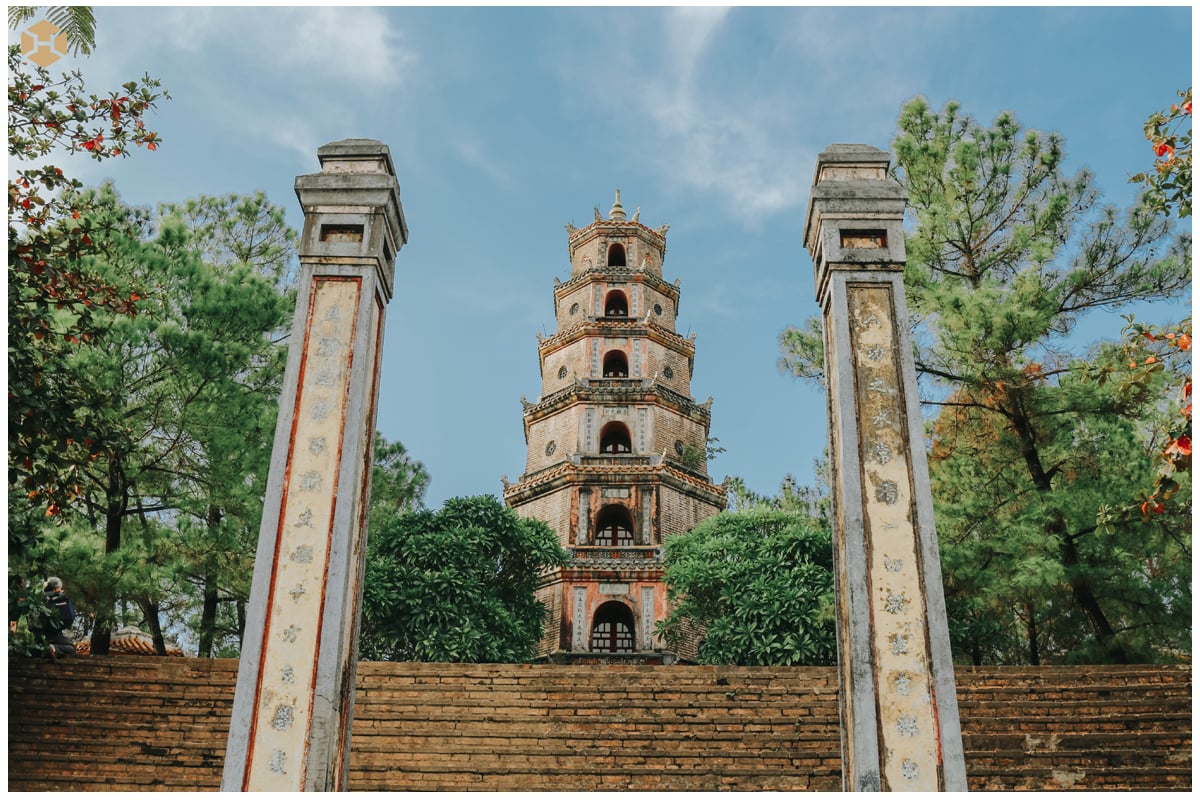Many generations have listened to Trinh Cong Son's music, but perhaps only a few people know that the song "Where Do the Waves Go?" was inspired by the verse "Gate Gate Pāragate Pārasaṃgate Bodhi Svāhā" (Heart Sutra). He himself always considered himself a Buddhist, so Buddhism had a profound influence on him since childhood; and when he grew up, he put Buddhist words and philosophy into his songs. Because Buddhism in Hue had permeated his being, it was the Way that entered Life.
Pilgrims who choose Thua Thien-Hue as their spring destination to demonstrate their devotion to Buddhism probably think like the late musician Trinh: the meditation space in Hue is a sacred place for them to find serenity as well as cultivate their mind, nurture their character, and be kind.
THIEN MU PAGODA
Going along Nguyen Phuc Nguyen Street to the west along the Huong River, we will see the oldest pagoda in Hue - Thien Mu Pagoda (Linh Mu Pagoda). The pagoda is located in the Complex of Hue Monuments, recognized by UNESCO as a World Cultural Heritage on December 11, 1993. Thien Mu Pagoda was officially established in the year of Tan Suu (1601), during the reign of Lord Tien Nguyen Hoang - the first Nguyen Lord in Dang Trong.
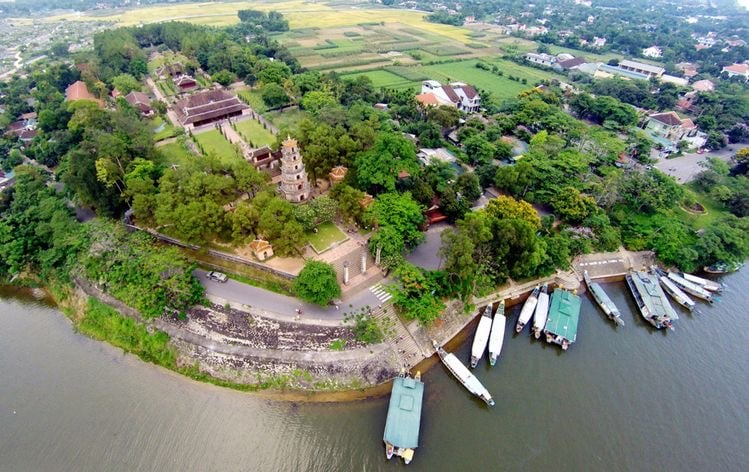
Thien Mu Pagoda - the oldest pagoda in Hue
With its location on a high hill overlooking the confluence of the green Huong Giang River and the green pine-covered mountains in the distance, Thien Mu is a very poetically decorated pagoda, suitable for spring sightseeing.
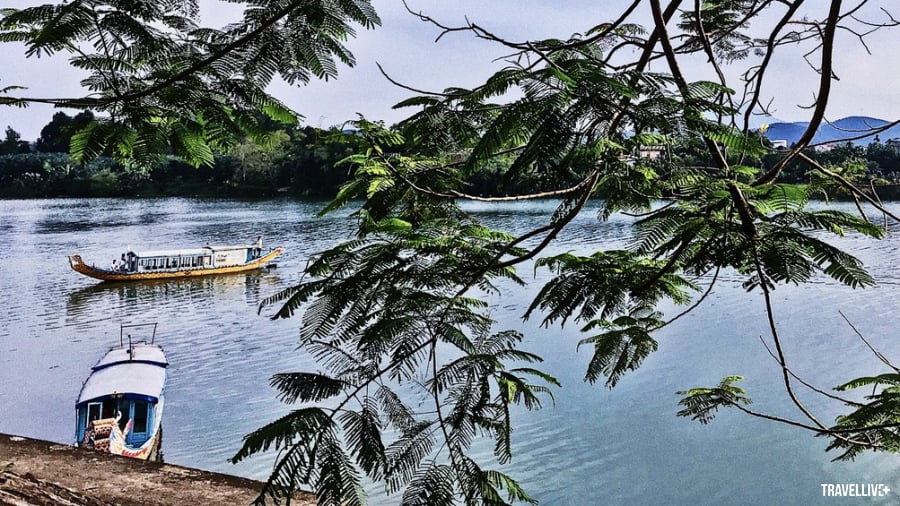
Symbol of the poetic beauty of Hue
A symbol associated with Thien Mu Pagoda is Phuoc Duyen Tower. The 21-meter-high, 7-story tower was built in front of the pagoda in 1844. Each floor of the tower houses a Buddha statue. Inside, there is a spiral staircase leading to the top floor, where a golden Buddha statue used to be. In front of the tower is Huong Nguyen Pavilion, on the roof of which is placed the Dharma wheel - a Buddhist dharma wheel, a symbol of Buddhism.
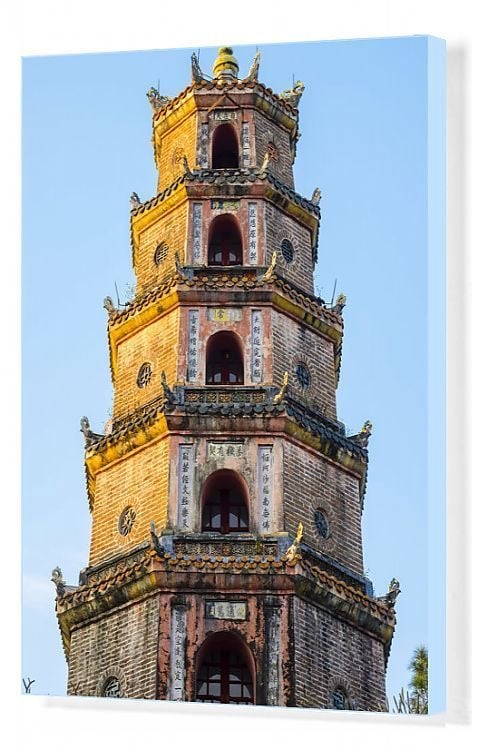
Phuoc Duyen Tower - Thien Mu Pagoda
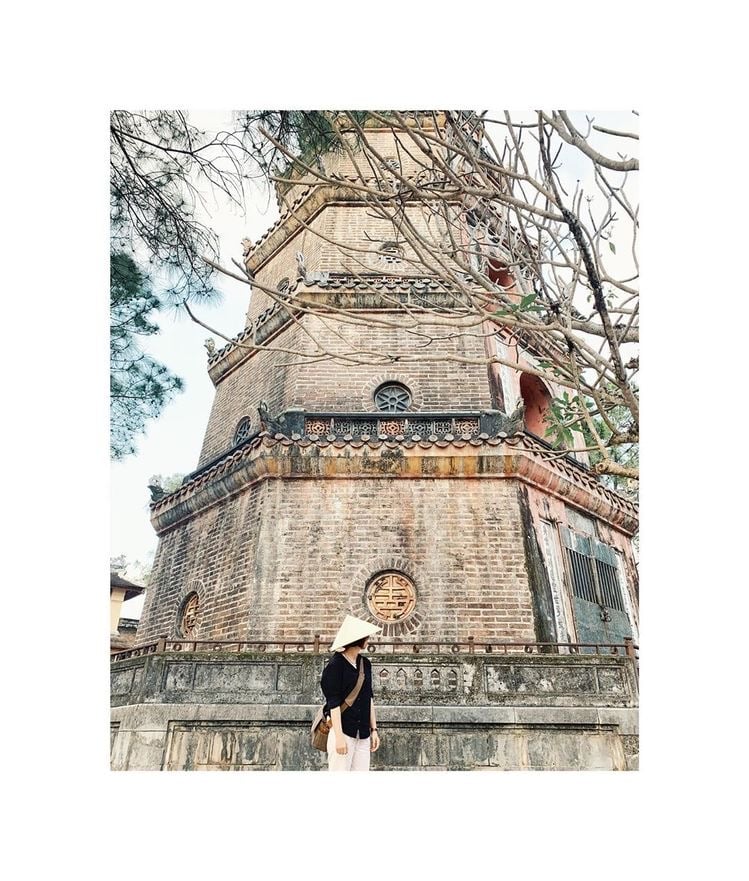
Many young people check-in at Phuoc Duyen Tower when traveling in Hue.
TU DAM PAGODA
Going to the South bank of the Perfume River, located at No. 1 Su Lieu Quan Street, Truong An Ward, is the famous ancient pagoda - Tu Dam Pagoda. The pagoda was founded by Zen Master Minh Hoang - Tu Dung around the end of the 17th century, and was later named An Ton Pagoda with the meaning of "taking the transmission of the mind as the main principle". In 1841, King Thieu Tri changed the name of An Ton Pagoda to Tu Dam (to avoid the taboo of the king's name, Mien Tong), with the meaning of "the auspicious cloud of Buddhism".
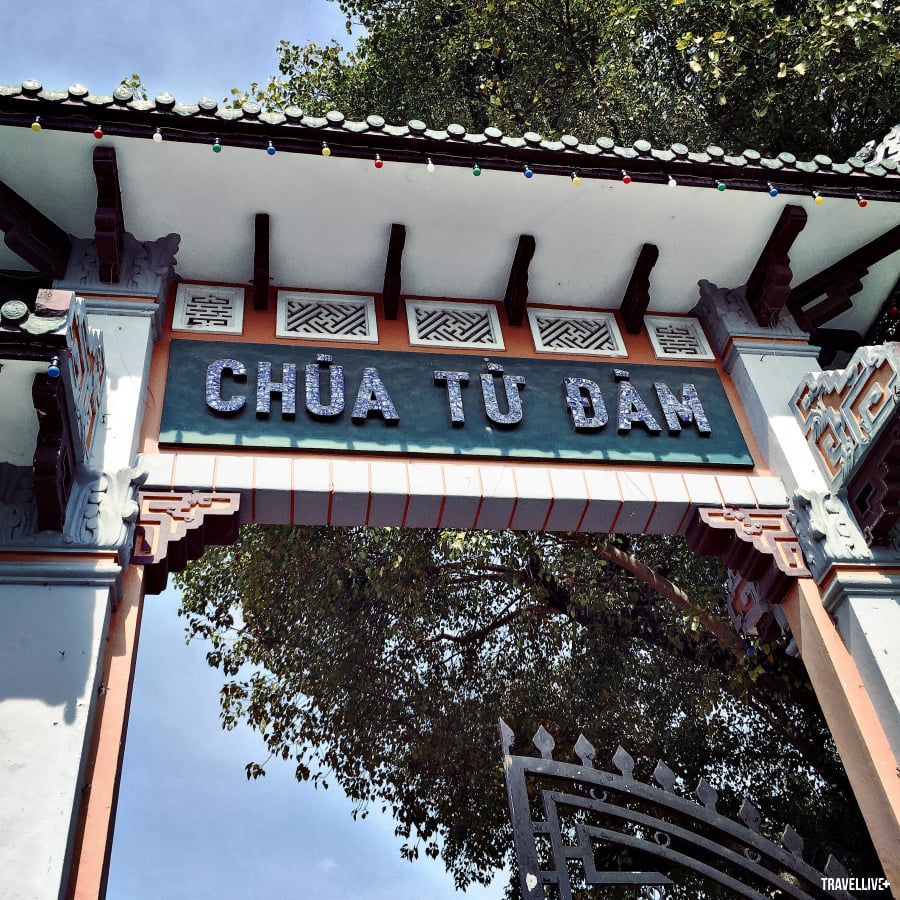
The three-entrance gate of Tu Dam Pagoda
Entering the gate of Tu Dam Pagoda, on the right side of the yard is a Bodhi tree originating from the Bodhi tree in Bodh Gaya in India (where Buddha Shakyamuni attained enlightenment). The Buddha shrine in the main hall is solemnly decorated, but simply. In the middle is a single statue of Buddha Shakyamuni, on both sides are reliefs of two Bodhisattvas, Manjushri and Samantabhadra. Above the main hall hangs a red and gold-plated plaque with three Chinese characters: "An Tong Tu". On both sides of this plaque are a pair of parallel sentences also painted in red and gold. In addition, on the porch of the pagoda there is also a pair of parallel sentences of patriot Phan Boi Chau and of layman Tam Minh (doctor Le Dinh Tham).

In front of Tu Dam Pagoda
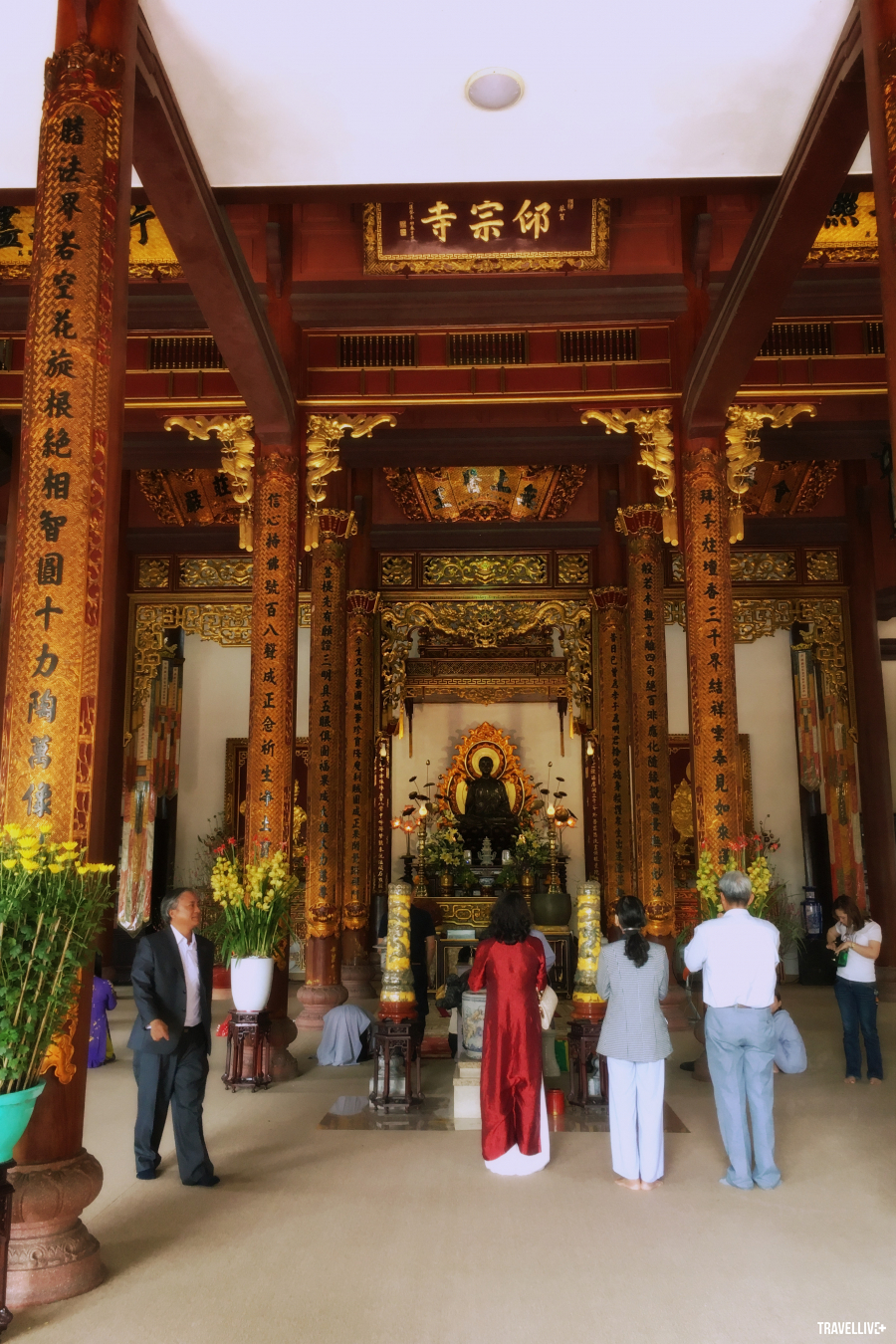
Main hall of Tu Dam Pagoda
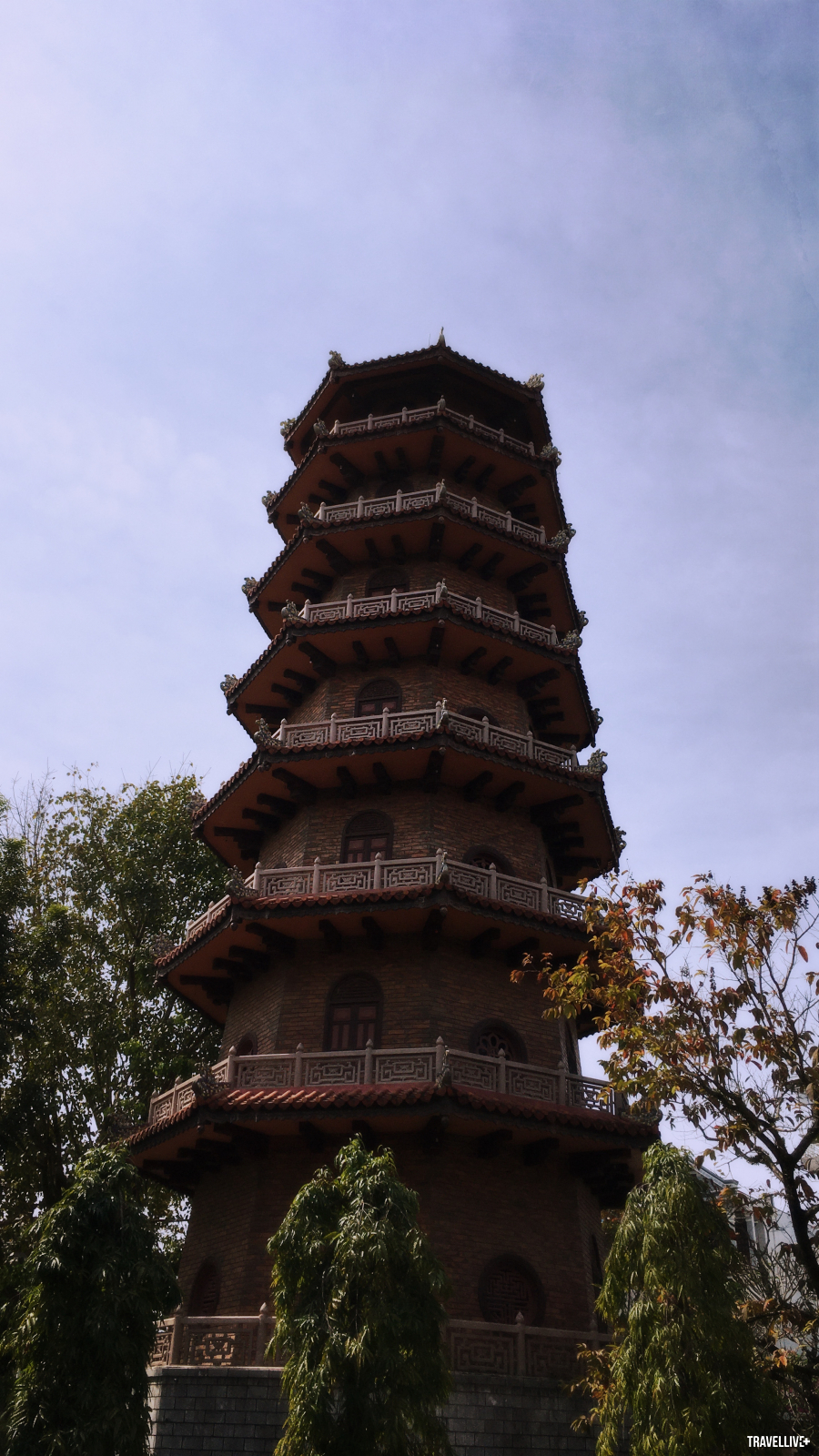
The stupa outside the courtyard of Tu Dam Pagoda
TU HIEU PAGODA
One of the great ancient temples and a cultural and historical landmark of the ancient capital of Hue is Tu Hieu Pagoda.
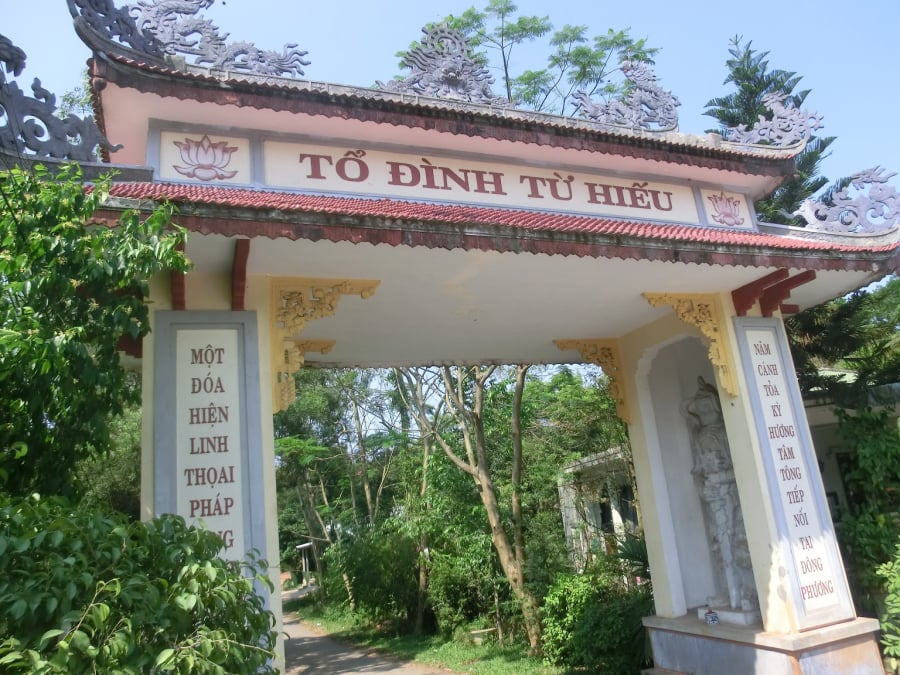
Tu Hieu Pagoda or also known as Tu Hieu Ancestral Temple
Tu Hieu Pagoda is located in Duong Xuan Thuong III village, Thuy Xuan ward. In 1843, monk Nhat Dinh came here to open the mountain, build "Thao Am An Duong" to practice meditation and take care of his old mother. He was famous for being a filial son, crossing forests and streams to buy fish to cook porridge for his old mother to eat. The touching story reached the ears of King Tu Duc, who was a filial king to his mother. The king was very impressed by monk Nhat Dinh's heart and granted him "Sac Tu Tu Hieu Tu". The pagoda was named Tu Hieu from then on.

The temple gate exudes an ancient sacredness.
Visiting Tu Hieu Pagoda, we not only hear about the Vietnamese people's tradition of filial piety, not only is it a spiritual place to worship Buddhism, but we can also listen to the pine trees rustling, birds singing, see fish swimming in the lake, and enjoy the quiet, peaceful scenery surrounding the pagoda.

Scenery around Tu Hieu Pagoda
HUYEN KHONG SON THUONG PAGODA
To imagine the strange and magical beauty, Hue people will immediately think of Huyen Khong Son Thuong Pagoda, a famous pagoda, a scenic spot that captivates tourists from all over.
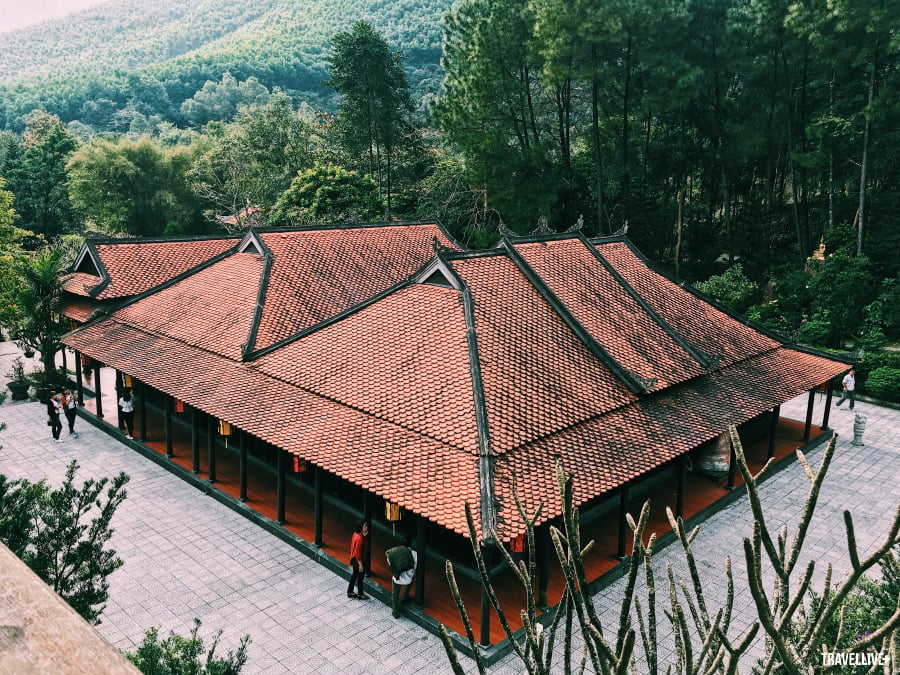
Huyen Khong Son Thuong is located in the middle of a vast pine forest.
Huyen Khong Son Thuong is located in Cham village, Huong Ho ward, Huong Tra town. The pagoda belongs to the Southern Buddhist sect, founded by Venerable Gioi Duc in 1989. The pagoda is located in the middle of a pine forest, and does not have a large Tam Quan gate, so when looking at it, it feels like the gate of a Hue garden house. The pagoda grounds are a green garden with small streams full of purple water lilies, precious orchids, frangipani, cycads, pines, cypresses... hundreds of years old, a peaceful and quiet space.
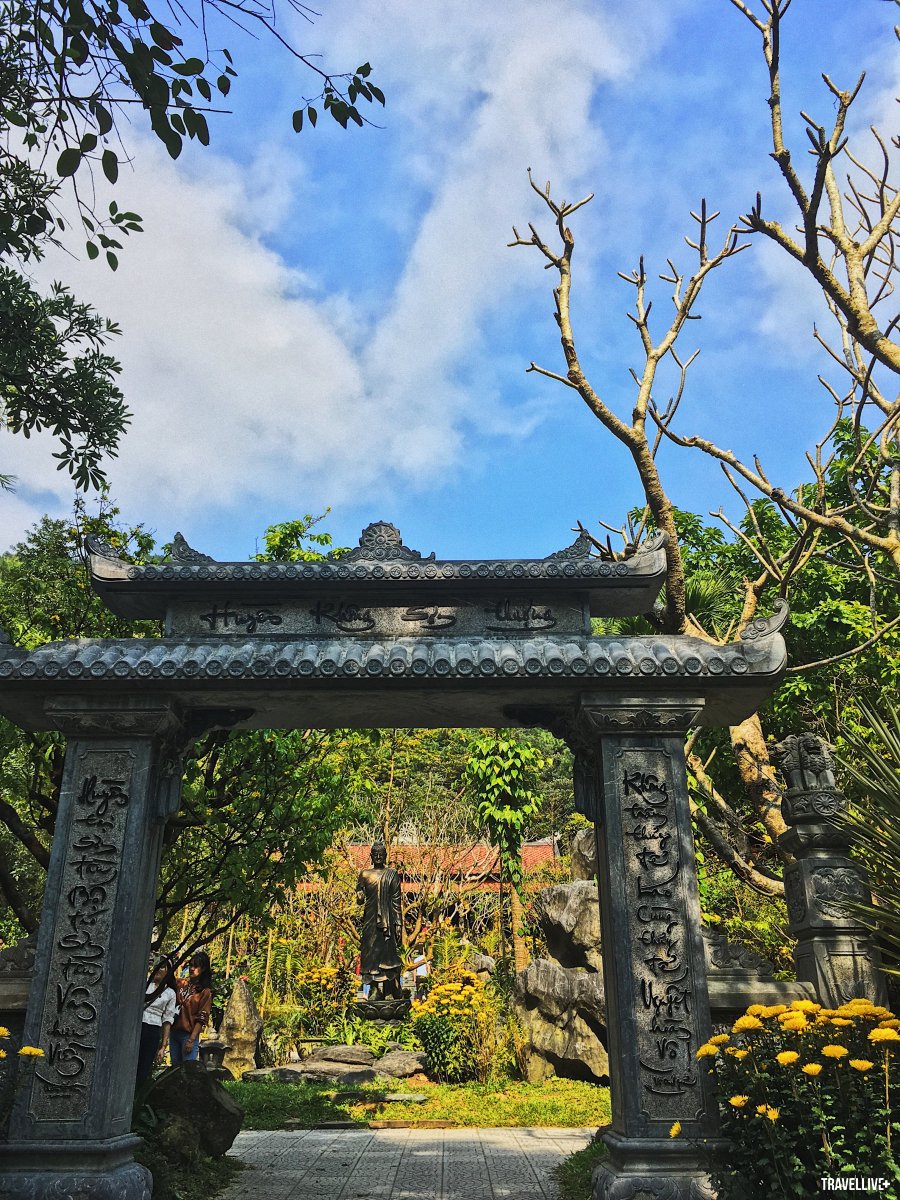
The temple gate feels like the gate of a Hue garden house.
The main hall of the pagoda is a variation of a Hue traditional house with traditional architectural style and materials to preserve the spirit of Hue, the Vietnamese spirit, taking harmony with nature and poetic soul as the main idea; the role of belief is light, the focus is on the direction of meditation and religious life.
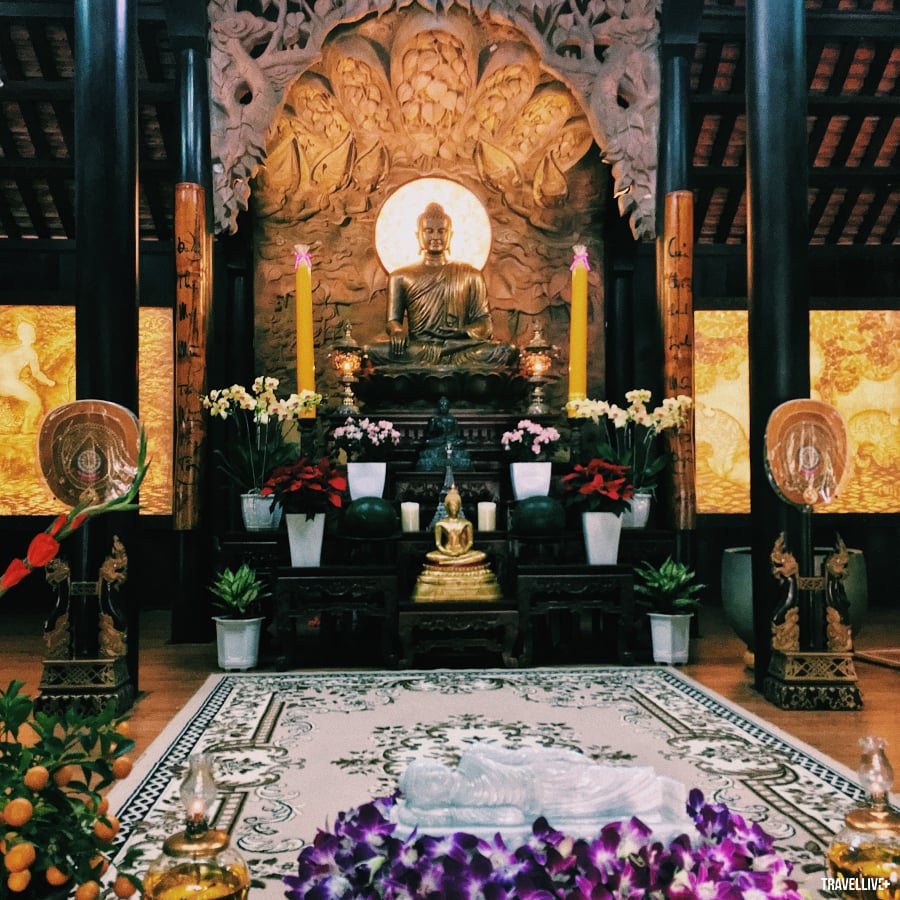
Main hall of Huyen Khong Son Thuong Pagoda
The purple cloud hermitage is the abbot’s residence, study, place to receive guests and write calligraphy. This is also the place where people who love literature, poetry, and calligraphy come to discuss, comment on poetry, practice writing, and show off their calligraphy…
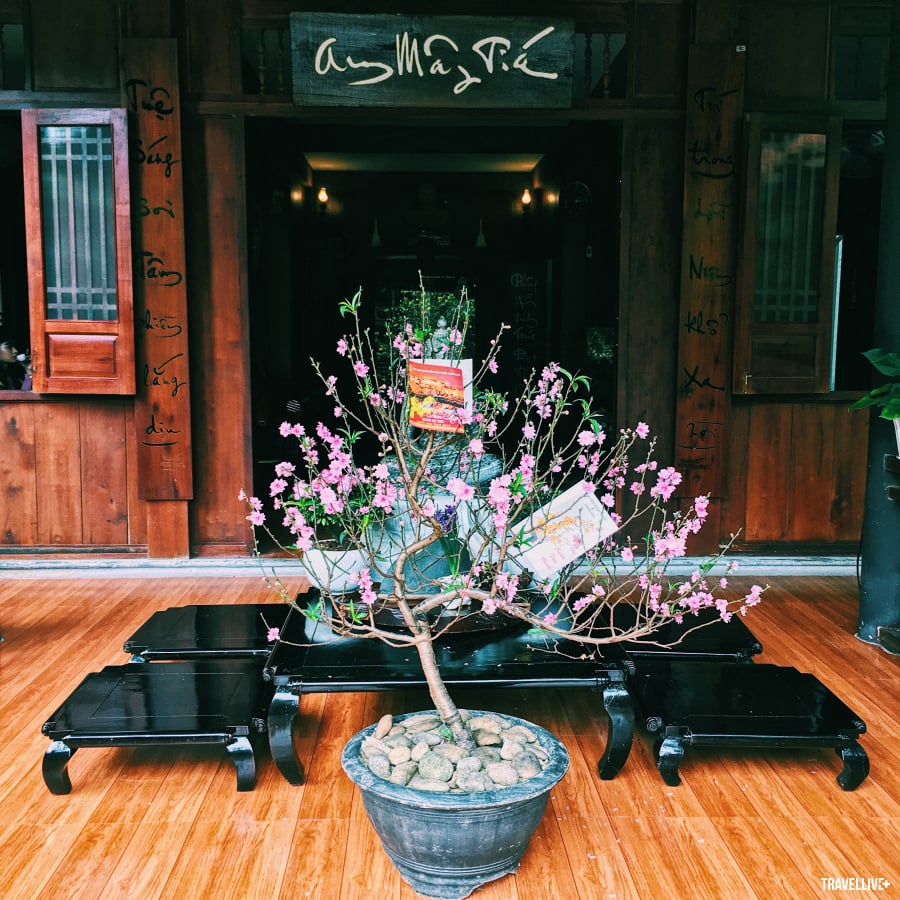
Purple Cloud Hermitage - Huyen Khong Son Thuong Pagoda

Huyen Khong Son Thuong Pagoda campus
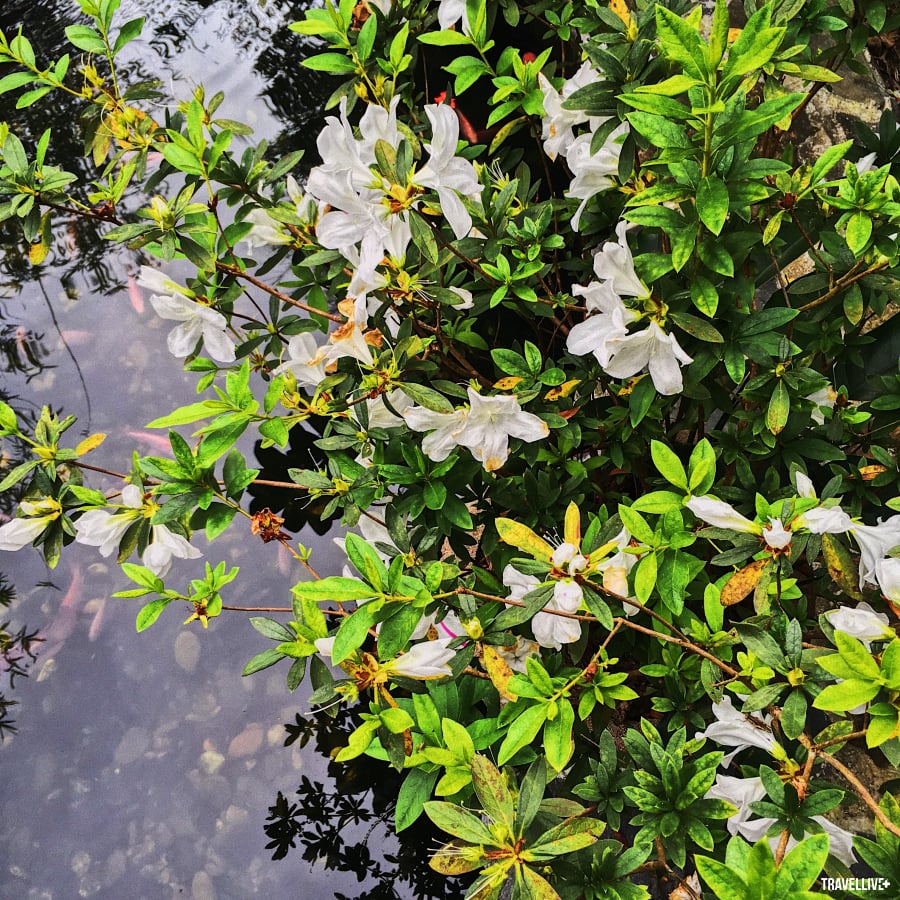
Stunning natural beauty in Huyen Khong Son Thuong Pagoda

The Buddhist scriptures carved on stone are the symbol of Huyen Khong Son Thuong Pagoda.
Standing Buddha Statue
The Quan Am statue (also known as the Standing Buddha statue) was built on Tu Tuong mountain, Thuy Bang commune, Huong Thuy district, Thua Thien-Hue province. The Quan The Am statue is beautifully designed, very balanced, the Bodhisattva's face is gentle and generous, the left hand holds a vase of nectar, the right hand makes the nectar seal, the whole body is dressed in a soft, wavy white robe, sitting on a large lotus throne with a diameter of more than 10 m. His statue is placed on a large two-story pedestal; the upper floor is a place of worship, the lower floor is for visitors to stay, as well as a temporary place for monks and nuns to stay when attending the ceremony.

Standing Buddha Statue - Hue
In the early days of spring, the Quan The Am Spiritual Tourism Cultural Center where the Standing Buddha statue is located is always crowded with people from all over the country coming here to sightsee and worship Quan Am Buddha altar. Most of those who come to visit this place have the same wish to pray for peace for themselves and their loved ones, hoping for a new year with lots of luck, health, and everything going as planned. Coming to Hue, this is definitely a place worth visiting, especially on the occasion of Lunar New Year.

Tourists from all over the world eagerly pray for the New Year
“Each person must strive to build a quiet temple in their heart and nurture the Buddha nature within themselves into a solid monument. It will help us see the world differently, see life differently. To me, Buddhism is a philosophy that makes us love life more, not makes us forget life.”- Trinh Cong Son.





